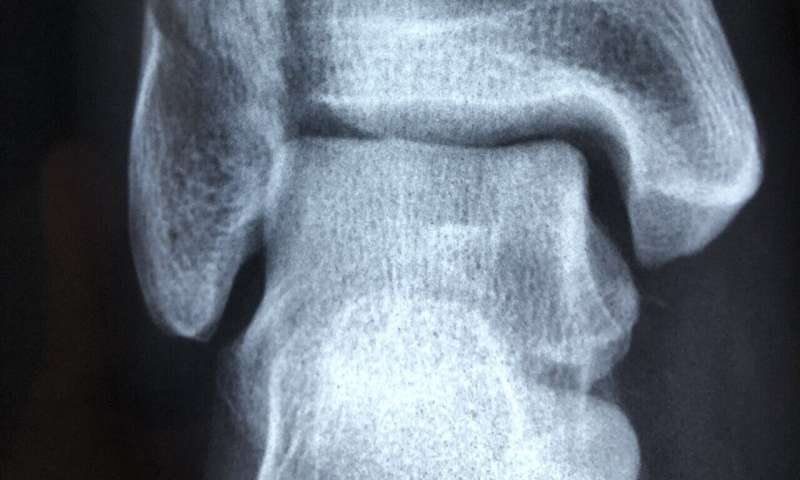This article has been reviewed according to Science X's editorial process and policies. Editors have highlighted the following attributes while ensuring the content's credibility:
fact-checked
peer-reviewed publication
trusted source
proofread
Patients prescribed intermittent corticosteroids are less likely to have fracture risks considered, research suggests

Prolonged use of corticosteroids, such as prednisolone, has been shown to cause osteoporosis and therefore increases the risk of breaking a bone. The more corticosteroids are taken, the greater the damage can be.
In individuals with prolonged corticosteroid use, especially in older age, fracture preventive measures are recommended. These can include referrals to specialist osteoporosis clinics or prescribing bisphosphonates, a type of drug that can counteract the detrimental effects of corticosteroids on the bones.
In a study published in JAMA Dermatology, a team of researchers compared data to determine whether corticosteroid prescription patterns may affect the likelihood that fracture prevention is considered. The authors, including researchers from the London School of Hygiene & Tropical Medicine (LSHTM), looked at data from across the UK and Ontario, Canada.
Dr. Julian Matthewman, lead study author and Research Fellow at LSHTM, said, "Despite well understood benefits of fracture preventive care, including the use of bisphosphonates, previous research suggests that it is under-prescribed. One reason for this could be that doctors are not made aware when some patients have been prescribed an amount of corticosteroids that can damage the bones, such as when they are prescribed gradually or intermittently over multiple prescriptions, potentially even by several doctors.
"In our study, we focused on people aged 66 or older that were prescribed corticosteroids at a level where fracture preventive care should be considered. We used data from GP practices and hospitals across the UK and Ontario, Canada, including information on both corticosteroid and bisphosphonate prescriptions.
"We found that patients prescribed gradual or intermittent corticosteroids were indeed less likely to receive fracture preventive care as compared to patients prescribed corticosteroids in fewer but higher doses or longer-lasting prescriptions. In the UK, the former were about half as likely to receive fracture preventive care. In Ontario, they are about one third less likely.
"Fractures in older age can be dangerous, even deadly, cause disability and incur high costs for health care systems. Hip fractures alone cost the UK around £2 billion, and account for 1.8 million days spent in hospitals each year, according to the Office of Health Improvement & Disparities. Better recognizing patients who can benefit from proactive care has the potential to prevent fractures and their consequences."
More information: Julian Matthewman et al, Association of Different Prescribing Patterns for Oral Corticosteroids With Fracture Preventive Care Among Older Adults in the UK and Ontario, JAMA Dermatology (2023). DOI: 10.1001/jamadermatol.2023.2495




















